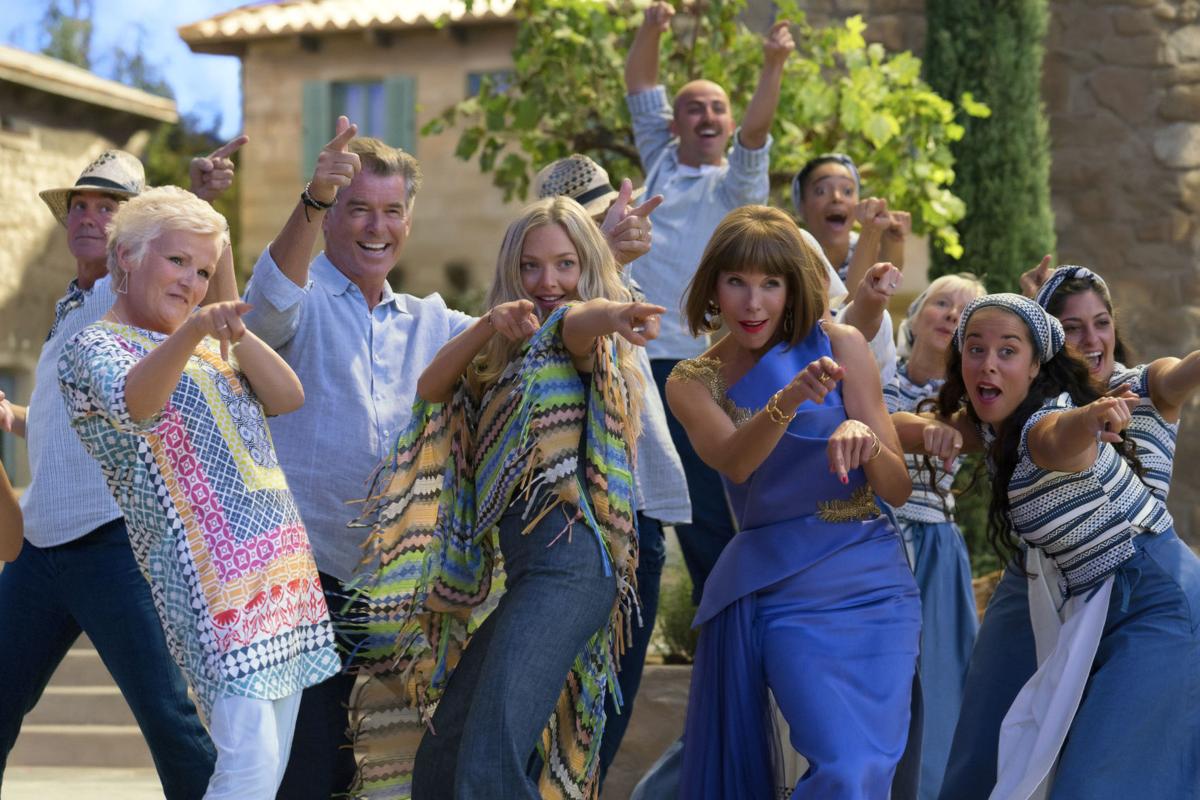
‘Mamma Mia! Here We Go Again’ stays in tune (mostly)
Written by: Kimberly Pierce, CC2K Associate Editor
Since word of the musical sequel Mamma Mia! Here We Go Again broke online, the movie has been a bit of a wild-card. The first film (2008’s Mamma Mia) is based on the ultra-popular stage musical of the same name, which in-turn comes from the music of the 1970s Swedish super group, ABBA. Mamma Mia! Here We Go Again still takes it’s influence from the pop icons, but this time crafts an original narrative, and hile the new film is far from perfect there is a lot here to enjoy.
Mamma Mia! Here We Go Again continues after the first installment left off. We find Sophie (Amanda Seyfried) putting the finishing touches on a “grand re-opening” of the Hotel Belladonna after Donna’s (Meryl Streep) off-screen death. All the favorites are back (for a bit), with Pierce Brosnan, Christine Baranski and Julie Walters doing most of the heavy lifting. At the same time, the narrative flashes back to a young Donna (Lily James) as she leaves school, relocates to Greece and meets the younger versions of our male leads (Jeremy Irvine, Josh Dylan and Hugh Skinner). Ol Parker directs the film from his own script (Richard Curtis, Parker and the previous film’s director Catherine Johnson each receive story credit).
Examining the structure of the film, the decision to focus much of the narrative on young Donna in flashback is a supremely smart move. While Lily James struggled to stand out in some of her most recent roles, she’s vibrant and incredibly likable as the younger version of Meryl Streep. Ultimately, it is this 1970s story which carries the movie. The supporting players behind James are equally charismatic and likable. They are also stronger singers than our A-list leads, allowing for more solid music numbers. Hugh Skinner is delightful (and completely underutilized) as Harry. His take on “Waterloo” is one of the musical high-points in the movie. Jessica Keenan Wynn also puts forward a vibrant comedic performance as young Tanya. Hopefully, the strong performance from the actress is enough to shift her onto the industry’s radar. We need to see more from her in the future.
Unfortunately, Parker’s camera gets a trifle gaze-ey when looking at James. This is particularly noticeable during the peak romantic moments of her scenes with Irvine, Dylan and Skinner. James looks absolutely stunning with wind-swept hair while simultaneously backlit by the Mediterranean sunlight. This is not duplicated on the male characters, inferring that (while this film is geared towards a female audience) we’re looking at Donna through the eyes of the male characters. It seems this is how they each remember Donna, through delightfully sunny nostalgia goggles.
Meanwhile, the contemporary portion of Mamma Mia! Here We Go Again is sluggish and bland. Seyfried and Brosnan struggle to carry the emotional weight and are only saved by the cinematic breath of fresh air that is Julie Walters and Christine Baranski. However, with as much as the modern portions drags it becomes clear this movie doesn’t need the dual storylines. Perhaps these scenes are included to ensure the audience remembers this is still Mamma Mia, or to make sure the film capitalizes on the perceived name recognition of its A-list cast. Ultimately, the movie would have been equally (if not more) entertaining had it simply focused on the youthful and vibrant flashbacks.
The main purpose of the Seyfried story seems to be thematic as opposed to character based. In a surprising move (coming from a male director), the emphasis of this story is placed on the female relationships rather than building romantic pairings. The male leads (particularly Colin Firth and Stellan Skarsgård) are little more than side-characters. Rather, Sophie’s main purpose in the narrative is to build an identification with her deceased mother. This leads to some emotional moments (I admit, there were tears); however, it is disappointing the script chooses to see Sophie’s pregnancy as the end-all in the young woman finding herself. (In the trailer…not a spoiler). How many times do we have to say it, having a baby does not have to be the ultimate goal for a woman!
The songs (particularly in the modern story) are heavily edited. As a result, the numbers end up feeling like music videos rather than scenes in a big-budget musical. Interestingly, Parker’s heavy-handed editing doesn’t make an appearance in the flashback numbers, so the major effect is to pull the audience out of the action. Musicals as a genre require a certain amount of audience buy-in to accept people randomly breaking into song, so the last thing a movie needs is to pull the audience back from the story.
Keep an eye out for cameos from ABBA members Benny Andersson and Björn Ulvaeus.
Ultimately, Mamma Mia! Here We Go Again is a pleasant and entertaining surprise. Coming ten years after the first film, the sequel is as fun and toe-tapping as the last. (It is ABBA music after all.) Fans of Mamma Mia should definitely add this one to their list.
